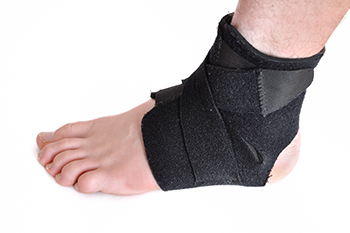Connect With Us
Blog
Items filtered by date: September 2023
Lupus and Foot Problems

Lupus patients commonly experience foot-related problems that are painful and can cause disability. These issues encompass various foot structures, including joints, skin, and nerves. Foot problems in lupus patients can originate from joint and soft tissue disorders, dermatological complications, neurological and circulatory issues, and vasculitis. Approximately two-thirds of lupus patients have foot arthritis. Imaging shows inflammatory foot joint abnormalities, with the ankle and metatarsophalangeal joints most affected, essential for mobility. Dermatological issues, including corns and calluses, are common and may lead to foot ulceration. Immunosuppressive treatments increase the risk of skin infections such as fungal infections. Lupus patients face vascular problems, including peripheral vascular disease and Raynaud’s phenomenon. Neurological deficits affect lupus patients which may lead to sensory neuropathy, altered gait, and an increased risk of falls. Foot deformities may not always be apparent due to footwear, and foot problems in lupus cannot always be solely attributed to the disease as they are also prevalent in the general population. Management of foot issues in lupus requires a comprehensive approach and podiatry care. If you have lupus and are experiencing foot problems, it is strongly suggested that you make an appointment with a podiatrist who can help you regain quality of life.
When dealing with systemic disease of the feet, it is extremely important to check the affected areas routinely so that any additional problems are caught quickly. If you have any concerns about your feet and ankles contact one of our podiatrists from American Surgeons Group. Our practitioners will assist you with all of your podiatric needs.
Systemic Diseases of the Feet
Systemic diseases affect the whole body, and symptoms usually are displayed in the feet. This condition can make a patient’s ability to walk unbearable. Systemic diseases include gout, diabetes mellitus, neurological disorders, and arthritis.
Gout – is caused by an excess of uric acid in the body. Common symptoms include pain, inflammation, and redness at the metatarsal/phalangeal joint of the base big toe. Gout can be treated by NSAIDs to relieve pain and inflammation, and other drugs that lower the acid levels in the body.
Diabetes mellitus – is an increase in the level of blood sugar that the body cannot counteract with its own insulin. Failure to produce enough insulin is a factor in Diabetes.
Diabetes of the Feet
Diabetic Neuropathy – may lead to damaged nerves and affect the feet through numbness and loss of sensation.
Peripheral Vascular Disease – can restrict the blood flow to the feet, and often times lead to amputation of the feet.
If you have any questions please feel free to contact our offices located in Homewood, South Chicago Heights, and Mokena, IL . We offer the newest diagnostic and treatment technologies for all your foot and ankle needs.
Causes of Ankle Instability

Ankle instability can be a persistent and troublesome issue for many people, affecting their daily activities and overall quality of life. It often arises due to a variety of factors that compromise the stability of the ankle joint. One common cause of ankle instability is a history of ankle sprains. When an ankle is sprained, the ligaments that support it may stretch or tear, weakening its ability to hold the joint in place. Muscle weakness is another contributing factor, as insufficient strength in the muscles surrounding the ankle can increase the joint’s instability. Additionally, certain medical conditions, such as ligament laxity and joint hypermobility, can predispose individuals to ankle instability. Improper footwear choices, especially high heels or shoes lacking adequate support, can also strain the ankle joint over time. Finally, biomechanical issues like overpronation or supination can create an imbalance, which further increases the risk of ankle instability. If you're experiencing ankle instability, it is suggested that you make an appointment with a podiatrist for a personalized assessment and guidance on managing your condition.
Ankle pain can be caused by a number of problems and may be potentially serious. If you have ankle pain, consult with one of our podiatrists from American Surgeons Group. Our practitioners will assess your condition and provide you with quality foot and ankle treatment.
Ankle pain is any condition that causes pain in the ankle. Due to the fact that the ankle consists of tendons, muscles, bones, and ligaments, ankle pain can come from a number of different conditions.
Causes
The most common causes of ankle pain include:
- Types of arthritis (rheumatoid, osteoarthritis, and gout)
- Ankle sprains
- Broken ankles
- Achilles tendinitis
- Achilles tendon rupture
- Stress fractures
- Bursitis
- Tarsal tunnel syndrome
- Plantar fasciitis
Symptoms
Symptoms of ankle injury vary based upon the condition. Pain may include general pain and discomfort, swelling, aching, redness, bruising, burning or stabbing sensations, and/or loss of sensation.
Diagnosis
Due to the wide variety of potential causes of ankle pain, podiatrists will utilize a number of different methods to properly diagnose ankle pain. This can include asking for personal and family medical histories and of any recent injuries. Further diagnosis may include sensation tests, a physical examination, and potentially x-rays or other imaging tests.
Treatment
Just as the range of causes varies widely, so do treatments. Some more common treatments are rest, ice packs, keeping pressure off the foot, orthotics and braces, medication for inflammation and pain, and surgery.
If you have any questions, please feel free to contact our offices located in Homewood, South Chicago Heights, and Mokena, IL . We offer the newest diagnostic and treatment technologies for all your foot care needs.
Heel Pain in the Morning?
How to Find the Perfect Size Shoes When Shopping Online

When it comes to choosing the right shoe size while online shopping, there are guidelines to avoid sizing mishaps. It is wise to measure your foot each time you buy from a new brand. To measure your foot accurately, stand on a flat surface with your heels against a wall. Place a ruler on the floor beside the inside of your foot from heel to toe. Position an object with a flat edge at the tip of your longest toe. Measure the length in centimeters where the flat edge crosses the ruler. When using size conversion charts, centimeters are used, as these charts are metric-based. In general, if you have shopped for a particular brand before, order your normal shoe size unless you have a wider foot or wear a half size, in which case, you might have to go up a half size. Account for brand differences as different shoe brands may have slight variations in sizing. By following these steps, you can confidently choose the right shoe size when shopping online, avoiding the frustration of returns, and ensuring a comfortable fit for your footwear. If you have additional questions about how to find the right size shoes for your feet, it is suggested that you make an appointment with a podiatrist to discuss this further.
Getting the right shoe size is an important part of proper foot health. Seek the assistance of one of our podiatrists from American Surgeons Group. Our practitioners will provide the care you need to keep you pain-free and on your feet.
Getting the Right Shoe Size
There are many people who wear shoes that are the incorrect size, negatively affecting their feet and posture. Selecting the right shoes is not a difficult process, so long as you keep several things in mind when it comes to choosing the right pair.
- When visiting the shoe store, use the tools available to measure your foot.
- Be sure there is ‘wiggle room’. There should be about an inch between your toes and the tip of your shoes.
- Do not always assume you are the same size, as manufacturers run differently.
- Purchase shoes later in the day, as your feet swell as the day progresses.
- If a shoe is not comfortable, it is not suitable. Most shoes can’t be ‘broken in’, and comfort should be the ultimate goal when it comes to choosing the right pair of shoes
As our feet hold our body weight and keep us moving, it is important to treat them right. Picking the right pair of shoes can provide your feet comfort and mobility without pain.
If you have any questions, please feel free to contact our offices located in Homewood, South Chicago Heights, and Mokena, IL . We offer the newest diagnostic and treatment technologies for all your foot care needs.
Fewer Complications With Minimally Invasive Foot Surgery

Minimally invasive foot surgery is a contemporary approach to solving foot problems. It involves performing standard foot and ankle surgeries through small incisions, which minimizes soft tissue damage compared to traditional open surgery. Minimally invasive foot surgery utilizes tiny instruments and incisions to address issues like bunions, hammertoes, and more. This approach results in reduced post-operative pain, less swelling, minimal scarring, and a faster return to regular activities. While there is less soft tissue trauma with this type of surgery, bone healing time remains consistent. During recovery, elevation, calf muscle and toe exercises, and avoidance of prolonged foot dependency are essential. If you have foot problems that require surgery, it is suggested that you make an appointment with a podiatrist to discuss whether minimally invasive foot surgery is right for you.
Foot surgery is sometimes necessary to treat a foot ailment. To learn more, contact one of our podiatrists of American Surgeons Group. Our practitioners will assist you with all of your foot and ankle needs.
When Is Surgery Necessary?
Foot and ankle surgery is generally reserved for cases in which less invasive, conservative procedures have failed to alleviate the problem. Some of the cases in which surgery may be necessary include:
- Removing foot deformities like bunions and bone spurs
- Severe arthritis that has caused bone issues
- Cosmetic reconstruction
What Types of Surgery Are There?
The type of surgery you receive will depend on the nature of the problem you have. Some of the possible surgeries include:
- Bunionectomy for painful bunions
- Surgical fusion for realignment of bones
- Neuropathy decompression surgery to treat nerve damage
Benefits of Surgery
Although surgery is usually a last resort, it can provide more complete pain relief compared to non-surgical methods and may allow you to finally resume full activity.
Surgical techniques have also become increasingly sophisticated. Techniques like endoscopic surgery allow for smaller incisions and faster recovery times.
If you have any questions please feel free to contact our offices located in Homewood, South Chicago Heights, and Mokena, IL . We offer the newest diagnostic and treatment technologies for all your foot and ankle needs.

